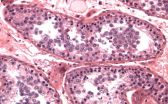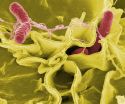(Press-News.org) MOOCs -- massive open online courses -- grant huge numbers of people access to world-class educational resources, but they also suffer high rates of attrition.
To some degree, that's inevitable: Many people who enroll in MOOCs may have no interest in doing homework, but simply plan to listen to video lectures in their spare time.
Others, however, may begin courses with the firm intention of completing them but get derailed by life's other demands. Identifying those people before they drop out and providing them with extra help could make their MOOC participation much more productive.
The problem is that you don't know who's actually dropped out -- or, in MOOC parlance, "stopped out" -- until the MOOC has been completed. One missed deadline does not a stopout make; but after the second or third missed deadline, it may be too late for an intervention to do any good.
Last week, at the International Conference on Artificial Intelligence in Education, MIT researchers showed that a dropout-prediction model trained on data from one offering of a course can help predict which students will stop out of the next offering. The prediction remains fairly accurate even if the organization of the course changes, so that the data collected during one offering doesn't exactly match the data collected during the next.
"There's a known area in machine learning called transfer learning, where you train a machine-learning model in one environment and see what you have to do to adapt it to a new environment," says Kalyan Veeramachaneni, a research scientist at MIT's Computer Science and Artificial Intelligence Laboratory who conducted the study together with Sebastien Boyer, a graduate student in MIT's Technology and Policy Program. "Because if you're not able to do that, then the model isn't worth anything, other than the insight it may give you. It cannot be used for real-time prediction."
Generic descriptors
Veeramachaneni and Boyer's first step was to develop a set of variables that would allow them to compare data collected during different offerings of the same course -- or, indeed, offerings of different courses. These include things such as average time spent per correct homework problem and amount of time spent with video lectures or other resources.
Next, for each of three different offerings of the same course, they normalized the raw values of those variables against the class averages. So, for instance, a student who spent two hours a week watching videos where the class average was three would have a video-watching score of 0.67, while a student who spent four hours a week watching videos would have a score of 1.33.
They ran the normalized data for the first course offering through a machine-learning algorithm that tried to find correlations between particular values of the variables and stopout. Then they used those correlations to try to predict stopout in the next two offerings of the course. They repeated the process with the second course offering, using the resulting model to predict stopout in the third.
Tipping the balance
Already, the model's predictions were fairly accurate. But Veeramachaneni and Boyer hoped to do better. They tried several different techniques to improve the model's accuracy, but the one that fared best is called importance sampling. For each student enrolled in, say, the second offering of the course, they found the student in the first offering who provided the closest match, as determined by a "distance function" that factored in all the variables. Then, according to the closeness of the match, they gave the statistics on the student from the first offering a greater weight during the machine-learning process.
In general, the version of the model that used importance sampling was more accurate than the unmodified version. But the difference was not overwhelming. In ongoing work, Veeramachaneni and Boyer are tinkering with both the distance function and the calculation of the corresponding weights, in the hope of improving the accuracy of the model.
They also continue to expand the set of variables that the model can consider. "One of the variables that I think is very important is the proportion of time that students spend on the course that falls on the weekend," Veeramachaneni says. "That variable has to be a proxy for how busy they are. And that put together with the other variables should tell you that the student has a strong motivation to do the work but is getting busy. That's the one that I would prioritize next."
INFORMATION:
Additional background
ARCHIVE: Study on MOOCs provides new insights on an evolving space
The production of petroleum from Canada's oil sands is on the rise with much of it destined for U.S. refineries. As the U.S. takes stock of its greenhouse gas emissions, scientists report in the ACS journal Environmental Science & Technology that the current oil sands production of fuels from "well-to-wheels" releases about 20 percent more carbon dioxide into the atmosphere than making gasoline and diesel from conventional crudes.
In 2013, the oil industry was producing nearly 2 million barrels per day from Canadian oil sands. By 2030, that number is expected to rise ...
JILA researchers have designed a microscope instrument so stable that it can accurately measure the 3D movement of individual molecules over many hours--hundreds of times longer than the current limit measured in seconds.*
The technology was designed to track the machinery of biological cells, down to the tiniest bits of DNA, a single "base pair" of nucleotides among the 3 billion of these chemical units in human genes. But the instrument could be useful well beyond biology, biochemistry and biophysics, perhaps in manufacturing.
JILA is a partnership of the National ...
GRAND RAPIDS, Mich., June 24, 2015 - Researchers at Spectrum Health Helen DeVos Children's Hospital have completed the first clinical trial of a new treatment for children suffering from neuroblastoma. In a clinical trial led by Giselle Sholler, MD, pediatric oncologist at Helen DeVos Children's Hospital and the Neuroblastoma and Medulloblastoma Translational Research Consortium (NMTRC), DFMO, an investigational agent, showed minimal side effects with long-term survival of three patients. This is the first clinical study of an oral dosing form of DFMO in any pediatric population. ...
Scientists have at their disposal a way to explore the possible prevention of genetic diseases before birth. But should they? Currently, the most promising path forward involves editing the genes of human embryos, a procedure rife with controversy. An article in Chemical & Engineering News (C&EN), the weekly newsmagazine of the American Chemical Society, parses the explosive issue.
Britt E. Erickson, a senior editor at C&EN, reports that at least one team of scientists has already published a study on altering disease-related genes of human embryos. The experiment was ...
In the most severe form of male infertility, men do not make any measurable levels of sperm. This condition, called azoospermia, affects approximately 1 percent of the male population and is responsible for about a sixth of cases of male infertility.
Oftentimes men with azoospermia don't know the underlying cause of their condition. But new research led by University of Pennsylvania scientists suggests that mutations in an X chromosome gene called TEX11 are responsible for a significant number of cases of infertility -- an estimated 1 percent of cases of non-obstructive ...
Complex magnetic structures are at the heart of promising new materials for devices in "spintronics", a field of research aiming at more energy efficient data storage and processing. A prominent example is the so-called spin valve, where the magnitude of the electrical current passing through a device is very sensitively dependent on its magnetic configuration. These configurations can be readily controlled by a magnetic field in artificial layer systems, resulting in the giant magnetoresistance effect (GMR), a discovery rewarded with the 2007 Noble price in physics to ...
College Park, Md. -- Extreme heat and precipitation events, which are expected to increase in frequency and intensity due to climate change, are associated with increased risk of Salmonella infections, according to a study led by researchers from the University of Maryland School of Public Health. The study is the first to provide empirical evidence that Salmonella infections related to extreme weather events are disproportionately impacting those living in the coastal areas of Maryland.
"We found that extremely hot days and periods of extreme rainfall are contributing ...
When ecologists gather in Baltimore, Md., this August for the 100th Annual Meeting of the Ecological Society of America, special attention will fall on the local Chesapeake Bay watershed, with field trips and research presentations exploring its rich wildlife and social history. At symposia, poster exhibits, and site visits, ecologists will have opportunities to discuss the latest research and experiences working with stakeholders in the region to improve the health of the nation's largest estuary.
Chesapeake Bay bears a heavy pollution burden from the growing metropolitan ...
PHILADELPHIA - Despite findings of previous studies and published guidelines, nearly two-thirds of patients with T4a larynx ("voice box") cancer are not receiving a total laryngectomy (surgical removal of the larynx), the recommended form of treatment, and as a result, have significantly worse survival rates versus those treated with a total laryngectomy, a new study published in the International Journal of Radiation Oncology, Biology and Physics by experts at Penn Medicine found. Patients who underwent a laryngectomy, on average, lived nearly two years longer than those ...
From today (1 July 2015) The BMJ requires sharing of individual patient data for all clinical trials.
This means that trials will be considered for publication only if the authors agree to make the relevant anonymised patient level data available on reasonable request.
The BMJ is the first general medical journal to require data sharing for all trials, extending its initial policy on sharing data for trials of drugs or devices, which took effect in January 2013, says Elizabeth Loder, The BMJ's acting head of research.
In an editorial to mark the launch of the new ...


